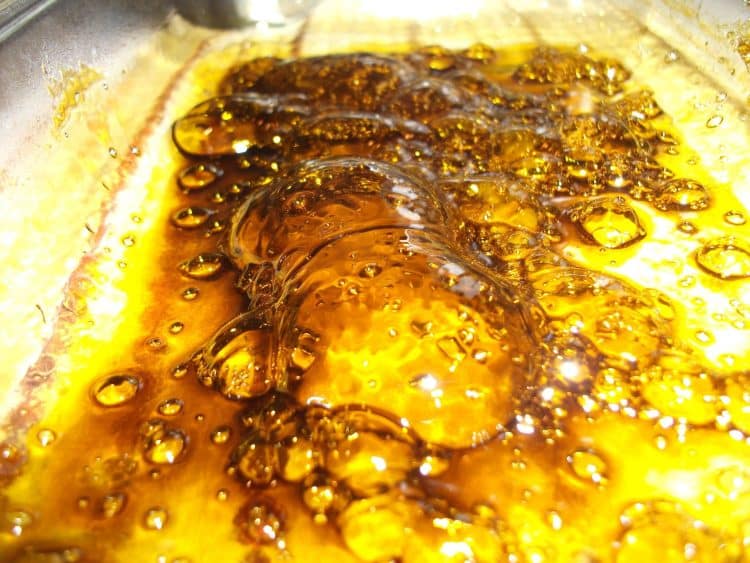Vacuum ovens/drying chambers lower the pressure in a chamber (i.e., create a vacuum) to allow substances to evaporate from samples with relatively low heat. The low pressure effectively lowers boiling points. Cannabis extractors use these devices to remove water (moisture) and residual solvents from concentrates without damaging thermo-labile compounds or decarboxylating phytocannabinoids (thus, ruining their concentrates). The practice is popularly known as “off-gassing.”
Solvent purging is used for hydrocarbon and ethanol extracts. It is most associated with butane hash oil (BHO) as rotary evaporators or falling film evaporators are commonly used for ethanol.
Chambers measure pressure in inches of mercury (inHG); standard atmospheric pressure (1 atm) is equal to 29.92 inHg. Extractors use vacuums to reduce pressure toward -29.92 inHG, which is an absolute vacuum not considered possible to reach.
Luna Technologies recommends roughly -29 inHG and a temperature of 85-105ºF (~29-41°C) for BHO. Some consider a less intense vacuum ideal to avoid pulling out desired compounds, including delta-9-tetrahydrocannabinol (THC). Precision Extraction advises starting at 93ºF (~34°C) and purging up to 3 days for shatter. They note that propane is to be limited for shatter since it extracts more terpenes and can cause tetrahydrocannabinolic acid (THCA) to “sugar.” This comes down to the desired end product. That said, propane purges more easily with its lower boiling temperature.
As solvent is purged, bubbles form in the concentrate (aka “muffins”); when the bubbling ceases, the solvent is considered removed. Analytical testing must confirm this, of course. Depending on solvent(s), oil quality, equipment, process, and desired end product, the time required can range widely from a single hour to five days. Extractors often flip the thin layers of concentrate at set intervals (e.g., 12 hours) to ensure full purging. Stirring or whipping concentrate should be avoided, however, as this can trap solvent.
Solvent purging with vacuum ovens requires a chamber, which typically features shelves for thin layers of concentrate. Aluminum shelves are recommended over stainless steel due to excellent heat conduction. The thin layers of concentrate are laid over parchment paper and placed on lab-grade silicone mats. A vacuum pump (e.g., rotary vane pump) removes evaporated solvent from the chamber.
Several companies manufacture vacuum ovens and pumps suitable for cannabis concentrate purging:
- Binder offers the VDL series with explosion-proof safety features designed specifically for flammable solvents and a temperature range of 15°C to 200ºC.
- AiVacuum houses equipment intended for BHO purging and emphasizes temperature control and uniformity with UL/CSA certification. Extraction company Xtracted Laboratories are among their clients.
- Cascade TEK creates vacuum ovens for various industries, including aerospace (e.g., NASA) and medicine (e.g., John Hopkins University). Their TVO-2 model offers full automation and a vacuum range of -3.0 to -29.9 inHg.
Overall, professional vacuum ovens with certified safety features are essential post-processing equipment for butane extractors.
Image: Vijiced, CC BY SA 3.0











